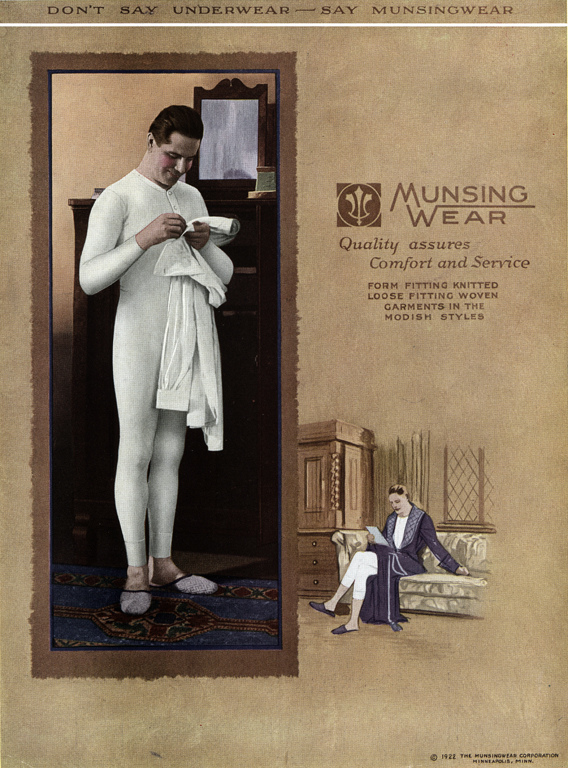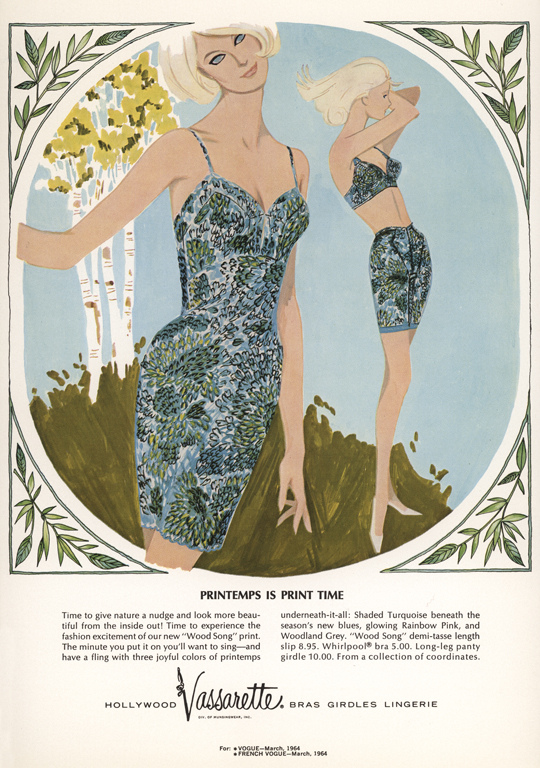
“In the Mood for Munsingwear:” understanding underwear’s place in pop culture
There’s irony to great design: The better the innovation, the faster it becomes unremarkable. This is especially true of design leaps that improve on the form and function of things we use every day — easy-to-turn can openers, bagless vacuum cleaners and kitchen utensils that feel good in your hand. The innovation works so well, we become accustomed to the ease of use it provides and forget it was ever otherwise. The design elements become seamlessly associated with the product, subsumed by use and familiarity, until they’re virtually invisible.
I got to thinking about this recently, after reading an appealing pop history: Susan Marks’ “In the Mood for Munsingwear: Minnesota’s Claim to Underwear Fame”. Despite the modest scope of the survey, this monograph is no dry, provincial accounting of a local business giant. The slim volume, brimming with beautifully printed historical photographs and campy vintage ad campaigns, offers a sort of sociological tour through 20th century fashion — a story about the changing tides of culture, told through underwear design.
The author narrates the history of the Midwest garment giant Munsingwear, but in the process she gives a wry meditation on what our evolving taste in unmentionables reveals about the emergence of feminism, changing family dynamics or the notion of the middle-class “good life.” Marks also delves into the American garment industry’s checkered relationship and early struggles with labor, especially as mass production of goods began to take hold in the early 20th century.
The book is just packed with surprising tidbits. Here’s one: I’d never before considered the evolving social nuances reflected in changing brassiere designs — the chaste full-body union suit from the turn of the century, the mid-century “torpedo bra” favored by sweater girls, Hollywood-inspired lacy underthings and the sorts of body-conscious, stretchy-fitted foundation garments that became ubiquitous through the ‘60s and ‘70s as “Cosmo” girls began to enter the work force in droves.
Marks’ telling of the story is quirky and surprisingly witty; the accompanying photos are evocative and richly detailed. If you’re interested in the convergence of fashion, feminist politics and 20th century pop culture, it’s an engaging read. And if you’re in the Twin Cities area, you can see a small selection of Munsingwear’s greatest hits in the little companion exhibit at the Minnesota History Center in “Underwear: A Brief History.”
”In the Mood for Munsingwear: Minnesota’s Claim to Underwear Fame” by Susan Marks (Minnesota Historical Society Press, 2011; $27.95). “Underwear: A Brief History” will be on view at the Minnesota History Center in St. Paul through September 11, 345 W. Kellogg Blvd., St. Paul; 651-259-3000. General admission to the history center is $10.
Recent Content
-
Artsarticle ·
-
Artsarticle ·
-
Artsarticle ·


